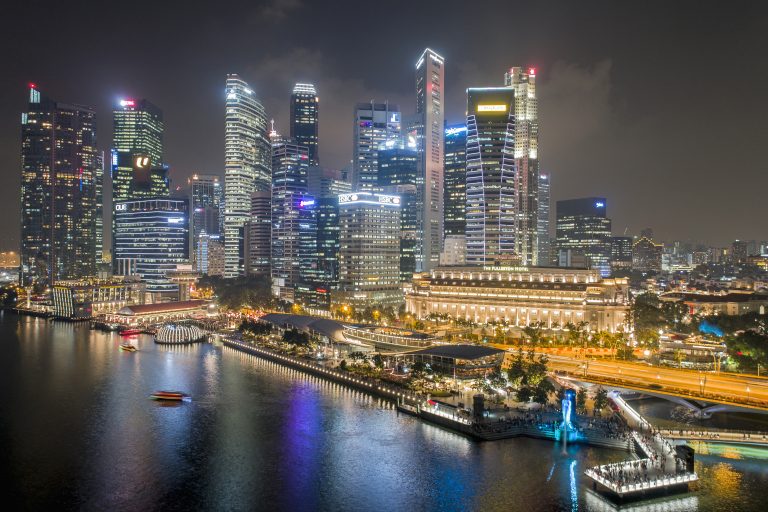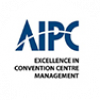MICE 2022 OUTLOOK: THOUGHTS FROM THREE GLOBAL INDUSTRY LEADERS

*This article was first published on AFECA Newsletter Volume 3/2022 and used with permission.
AFECA checked in recently with three MICE leaders to get their take on the outlook for 2022 and how industry players could strategise for recovery as we struggle through the pandemic. Though the recovery in 2022 looks like it may be held back, focusing on training, digital knowledge, advocacy work, and partnerships will lay the foundations for a stronger comeback. Read on to know the thoughts of Mr. David DuBois, President and CEO of International Association of Exhibitions and Events (IAEE), Mr. Kai Hattendorf, Managing Director/CEO of UFI, and Dato’ Vincent Lim, President of AFECA on key issues.
Slower rebound rate expected in 2022
The emergence of the Omicron variant which flared up in December and continued its assault into the new year has been holding back recovery efforts in 2022. Still, industry players are optimistic that the variant will not be a significant roadblock to recovery.
Mr. Hattendorf said: “Based on the experience of South Africa, the rise in cases will likely be short-lived and milder. With that in mind, there is considerable reason to be hopeful about the second half of 2022 – not just in Europe, but globally. As pandemic travel restrictions ease, shows will become more international again as well.”
Dato’ Vincent was similarly confident, pointing out that industry players were continuing to organise events such as Singapore Airshow (which went live from 15-18 Feb 2022). “Even though the show size was reduced, it is a very good start as we continue to build the momentum towards industry re-opening,” he said.
Mr. DuBois observed: “The optimistic forecast is that global exhibitions industry recovery will reach around 85% to 90% of 2019 levels by the end of 2023.”
This was echoed by Dato’ Vincent who cited the results of an AFECA survey: “The expected recovery in 2022 will be between 50% to 75% compared to before pandemic in the year 2019. We also foresee by 2023 the industry recovery will be from 75% to 90%, while full recovery is expected from 2024 onwards.”
Mr. Hattendorf felt that different regions would recover at a different pace, driven by demand and the pandemic development. “In 2022, the global recovery of the exhibition industry will continue, as especially small and medium businesses are pushing for a return to the show floor. How exactly the recovery will look in separate regions, will depend on the development of the pandemic.”
“We will have to live with a “stop and go” environment still for the coming months,” he added
Keys to recovery
The general observation is that demand for events is high, and the way forward is through vaccinations, border reopening, and the lifting of travel restrictions to help boost the MICE economy.
For UFI, they’ve discovered through a research partnership with Explori that people are pining for in-person events. “Visitors and exhibitors alike are eager to return to the faceto-face format. We at UFI are confident that as barriers to people gathering are reduced, we will see a surge in successful exhibitions return worldwide,” Mr. Hattendorf said.
Roadblocks to the future
But there are other challenges that industry players have to overcome even if vaccinations have been prescribed and borders reopened.
During the pandemic, many companies had to downsize their workforce to stay afloat, and the repercussions are being felt now.
“Ex-employees might not want to come back to this industry as they see the situation is not fully open yet and the current situation is unstable,” Dato’ Vincent said.
Mr. Hattendorf observed: “Some colleagues have left our industry to take on positions in seemingly more stable industries and sectors. Job security, salaries, and seemingly less stressful positions are the top reasons HR departments hear when dealing with these departures.”
The solution to overcome this situation is in branding and communications to continue attracting bright, motivated, and uniquely talented people.
“We need to re-think how we position our businesses, and to write a new narrative focused on why a career in business events stands out,” Mr. Hattendorf said.
“For a generation that is driven by the search for purpose, looking for meaning in their work, wanting to be involved – we can offer them what no other sector can: Being there where the future is taking shape, and being a member of the community that makes it happen,” he shared.
Mr. Hattendorf also pointed out another issue that industry players would be struggling with: retaining high-quality visitors to the show floor.
“Last year, we wrote that returning shows would focus mainly on the “trade” in trade show – and that is what we see, with sellers reporting good business with the buyers they meet, and referring to “high-quality visitors”. As the pandemic complexities diminish going forward, we will see how fast and to what degree we will welcome pre-pandemic customers back, and to what degree we will see fewer, more senior attendees becoming the norm.”
Embracing climate and carbon reductions are also something that industry players will have to deal with, said Mr. Hattendorf.
“As a global industry, we can make a difference in the global issue of climate change…We have a strong case to make as an industry that every exhibition that we organise helps to reduce carbon emissions – as we aggregate an industry and its players at one location at the same time, saving a multitude of individual business trips instead.”
The post-pandemic MICE landscape
After the speed at which technology was adopted by the MICE community during the pandemic, will it remain a mainstay long after the crisis is over?
Physical events are still important and they cannot be replaced, said Dato’ Vincent. “From the AFECA survey, 73% of respondents indicated on-site activities would still drive events and increase engagements, relegating virtual events as a side or complementary content.”
According to Mr. Hattendorf, physical events and technology will complement each other. He said: “Face-to-face will remain at the core of the events industry, but tomorrow’s champions of our industry will be those companies who find the best activation between onsite industry events and online communities, content and services. Platform solutions are here to stay. Expect to see consolidation taking place as well as more clearly defined business models in that space.”
Mr. DuBois noted that “in-person activities overwhelmingly outperform digital programming.” However, he said that technology applications would help expand marketplaces and audience engagement, which are also critical to the success of in-person programmes.
There hasn’t yet been a digital disruption moment in the business events space, Mr. Hattendorf observed, but “embracing digital solutions, alongside more traditional services, has enriched our offerings and value.
Strategies for the new norm
MICE industry players will need to step up their game in the post-pandemic MICE landscape, and focus on skills and training, innovative content creation, and continued collaborations and advocacy.
Dato’ Vincent said that once physical events are allowed to be held, event organisers will have to push themselves to come up with better show ideas and content that will keep visitors interested in attending physical shows.
“We have to think of more innovative value creation into the show as lots of information are already so easily available online nowadays,” he suggested.
Besides innovative content for events, a focus on people was also critical to ensure they had the necessary skills and training to perform in the new MICE landscape and deal with the ongoing changes.
Mr. DuBois shared the same sentiment: “Industry professionals must continue to focus on workforce development, in-person and digital engagements, as well as focused advocacy efforts with their local and regional and country government officials.”
Rebuilding the industry together
Notably, during the pandemic, governments and industry players have had deeper conversations and closer engagement, as both seek to identify economic recovery solutions together.
Dato’ Vincent said it was important to maintain open communications with the government as this would enable industry players to plan and manage their own strategies in line with government policies.
He said: “We need to have a clear understanding about the protocols and requirements as well as better coordination amongst regions and countries to kick-start a hasslefree travel and economic activity. Industry-government cooperation is important so that stakeholders are kept updated on developments about cross-border travels and health and safety protocols.”
Throughout the pandemic, the UFI team provided the industry with a “voice” to advocate for government support of the industry. They were active in sharing data and research to highlight the damaging impact of the pandemic on the exhibitions world.
“On our Coronavirus Resource Page, we have published a number of tools useful to event industry players including the UFI Global Framework for the Reopening of Exhibitions and B2B events, the Global market reopening tracker, and an overview of the different Government Support Programmes for the industry by region,” said Mr. Hattendorf.
Mr. DuBois encouraged the industry-government partnership to continue in order to strengthen the industry. “The excellent collaboration efforts, that have been supported and enhanced during these difficult times, must continue to present the exhibitions and events industry as extremely critical to the growth of our global economies and job creation,” he said.
He added: “Industry and government leaders will continue to better understand each other’s priorities. Government officials need to better understand how valuable and positively impactful our industry is to economic growth, job creation and overall global engagement. The burden is on both parties to better collaborate going forward.”
Summary
In a nutshell, the Omicron virus spread may be putting the brakes on industry recovery this year, but delegates are yearning to be on the show floor again. Vaccinations, quarantine-free travel and safety SOPs will boost MICE travel confidence but even so, industry players will have their work cut out for them as they deal with other pressing issues post-pandemic including attracting the right talent and high quality delegates as well as facing up to climate change.
Strategies to adopt moving forward should be focused on keeping up-to-date with new skills and knowledge, innovating creative content for events in the future, and continuing advocacy work to showcase the economic value of business events activities. In the meantime, collaborations, and particularly public-private partnerships, should be continued to sharpen industry focus.












